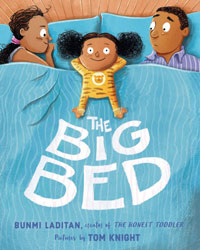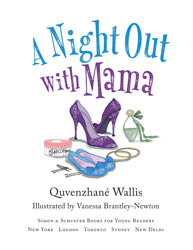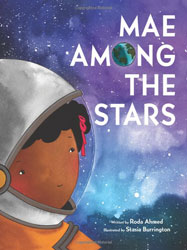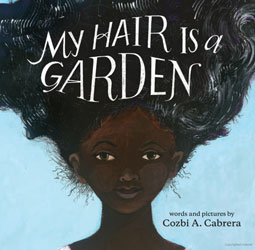The Big Bed
Written by Bunmi Laditan; illustrated by Tom Knight

An unnamed toddler has been spending nights in the big bed with her mom and dad. However, it is getting crowded, so she is running a savvy campaign to get her dad out. At night, Mom belongs to her; Dad has his own mom to put him to bed! The little girl is afraid of the dark and cannot sleep alone, and even her tinkles are beneficial for all. She can get a camping cot for Dad, and of course, she did get Mom’s permission. It would be better for all if Dad had his own bed.
Bunmi Laditan has written a tongue-in-cheek narrative of the battle over toddlers in the big bed. Laditan’s fictional toddler lays out all of the reasons why she should be the one sleeping next to her mom in an adorable way that any child will enjoy, and any parent will laugh at. Tom Knight’s illustrations are boldly colorful and highly expressive. The toddler—and her cat companion—alternate between adorable and meaning business as the pages turn. The mother and father have their share of emotional moments and the love, annoyance and laughter of the story just jump off the page.
Check Availability





